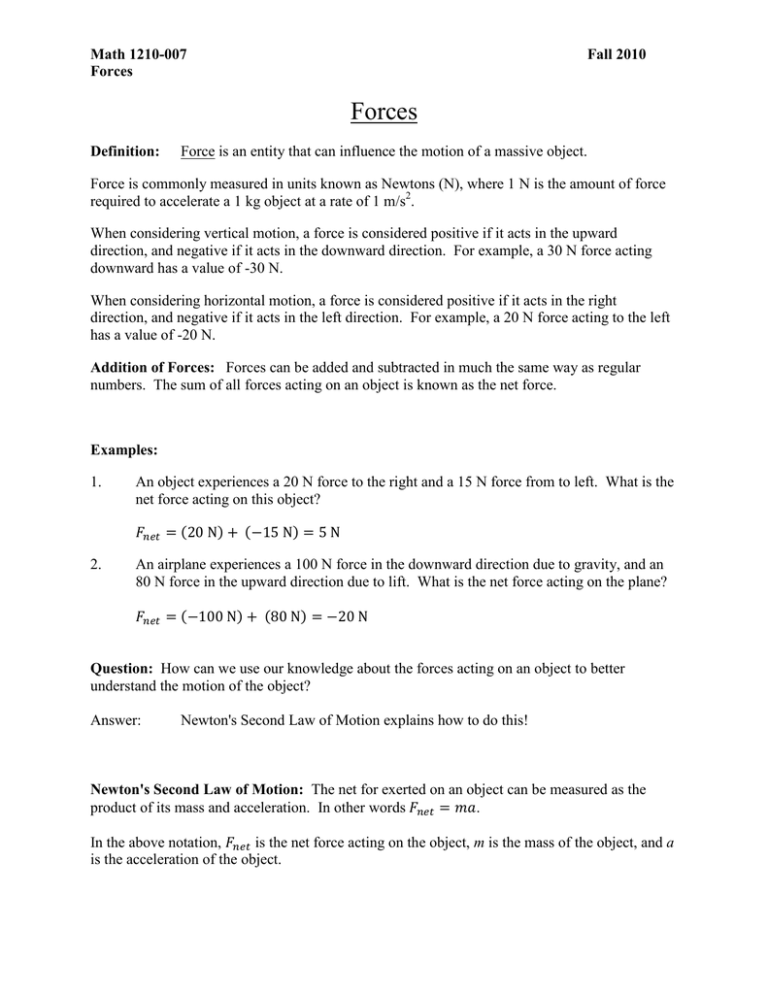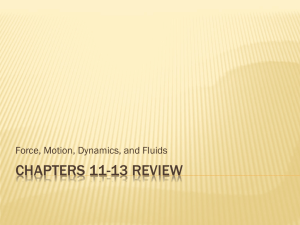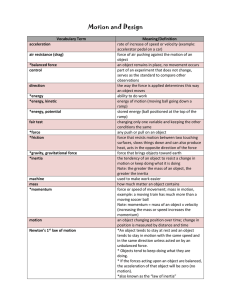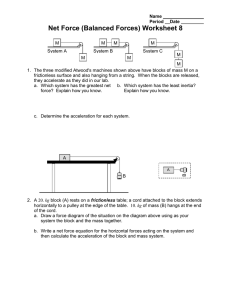Forces
advertisement

Math 1210-007 Forces Fall 2010 Forces Definition: Force is an entity that can influence the motion of a massive object. Force is commonly measured in units known as Newtons (N), where 1 N is the amount of force required to accelerate a 1 kg object at a rate of 1 m/s2. When considering vertical motion, a force is considered positive if it acts in the upward direction, and negative if it acts in the downward direction. For example, a 30 N force acting downward has a value of -30 N. When considering horizontal motion, a force is considered positive if it acts in the right direction, and negative if it acts in the left direction. For example, a 20 N force acting to the left has a value of -20 N. Addition of Forces: Forces can be added and subtracted in much the same way as regular numbers. The sum of all forces acting on an object is known as the net force. Examples: 1. An object experiences a 20 N force to the right and a 15 N force from to left. What is the net force acting on this object? 2. An airplane experiences a 100 N force in the downward direction due to gravity, and an 80 N force in the upward direction due to lift. What is the net force acting on the plane? Question: How can we use our knowledge about the forces acting on an object to better understand the motion of the object? Answer: Newton's Second Law of Motion explains how to do this! Newton's Second Law of Motion: The net for exerted on an object can be measured as the product of its mass and acceleration. In other words . In the above notation, is the net force acting on the object, m is the mass of the object, and a is the acceleration of the object. Math 1210-007 Forces Fall 2010 Using Newton's second law, we can calculate an object's acceleration given its mass and the net force acting on the object. Once we know the object's acceleration, we can then use calculus to understand its motion over time. Examples: 1. A 30 kg object experiences a force of 50 N to the left and 35 N to the right. What is the objects acceleration? , therefore Solving for a gives 2. m/s2 A 5,000,000 kg space shuttle experiences a force of 100,000,000 N in the upward direction due to thrust, and a 49,000,000 N force in the downward direction due to gravity. What is the acceleration of the shuttle?? , therefore Solving for a gives m/s2







